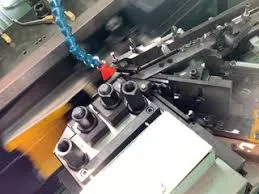
-
 Afrikaans
Afrikaans -
 Albanian
Albanian -
 Amharic
Amharic -
 Arabic
Arabic -
 Armenian
Armenian -
 Azerbaijani
Azerbaijani -
 Basque
Basque -
 Belarusian
Belarusian -
 Bengali
Bengali -
 Bosnian
Bosnian -
 Bulgarian
Bulgarian -
 Catalan
Catalan -
 Cebuano
Cebuano -
 Corsican
Corsican -
 Croatian
Croatian -
 Czech
Czech -
 Danish
Danish -
 Dutch
Dutch -
 English
English -
 Esperanto
Esperanto -
 Estonian
Estonian -
 Finnish
Finnish -
 French
French -
 Frisian
Frisian -
 Galician
Galician -
 Georgian
Georgian -
 German
German -
 Greek
Greek -
 Gujarati
Gujarati -
 Haitian Creole
Haitian Creole -
 hausa
hausa -
 hawaiian
hawaiian -
 Hebrew
Hebrew -
 Hindi
Hindi -
 Miao
Miao -
 Hungarian
Hungarian -
 Icelandic
Icelandic -
 igbo
igbo -
 Indonesian
Indonesian -
 irish
irish -
 Italian
Italian -
 Japanese
Japanese -
 Javanese
Javanese -
 Kannada
Kannada -
 kazakh
kazakh -
 Khmer
Khmer -
 Rwandese
Rwandese -
 Korean
Korean -
 Kurdish
Kurdish -
 Kyrgyz
Kyrgyz -
 Lao
Lao -
 Latin
Latin -
 Latvian
Latvian -
 Lithuanian
Lithuanian -
 Luxembourgish
Luxembourgish -
 Macedonian
Macedonian -
 Malgashi
Malgashi -
 Malay
Malay -
 Malayalam
Malayalam -
 Maltese
Maltese -
 Maori
Maori -
 Marathi
Marathi -
 Mongolian
Mongolian -
 Myanmar
Myanmar -
 Nepali
Nepali -
 Norwegian
Norwegian -
 Norwegian
Norwegian -
 Occitan
Occitan -
 Pashto
Pashto -
 Persian
Persian -
 Polish
Polish -
 Portuguese
Portuguese -
 Punjabi
Punjabi -
 Romanian
Romanian -
 Russian
Russian -
 Samoan
Samoan -
 Scottish Gaelic
Scottish Gaelic -
 Serbian
Serbian -
 Sesotho
Sesotho -
 Shona
Shona -
 Sindhi
Sindhi -
 Sinhala
Sinhala -
 Slovak
Slovak -
 Slovenian
Slovenian -
 Somali
Somali -
 Spanish
Spanish -
 Sundanese
Sundanese -
 Swahili
Swahili -
 Swedish
Swedish -
 Tagalog
Tagalog -
 Tajik
Tajik -
 Tamil
Tamil -
 Tatar
Tatar -
 Telugu
Telugu -
 Thai
Thai -
 Turkish
Turkish -
 Turkmen
Turkmen -
 Ukrainian
Ukrainian -
 Urdu
Urdu -
 Uighur
Uighur -
 Uzbek
Uzbek -
 Vietnamese
Vietnamese -
 Welsh
Welsh -
 Bantu
Bantu -
 Yiddish
Yiddish -
 Yoruba
Yoruba -
 Zulu
Zulu
Flat Thread Rolling Machine Price List Overview and Comparison Guide
Overview of Flat Thread Rolling Machines and Their Pricelist
Flat thread rolling machines have become an essential tool in the manufacturing industry, especially for producing high-precision fasteners, screws, bolts, and similar components. By employing a cold-forming process, these machines significantly improve the mechanical properties of the materials, leading to enhanced product durability. In this article, we will delve into the features, advantages, and price trends associated with flat thread rolling machines.
What is Flat Thread Rolling?
Flat thread rolling is a forming process that involves deforming a workpiece material using rotating dies. This process allows for the production of threads in a very precise manner without removing any material, which is a common trait in traditional machining methods. The machines typically feature two flat dies that work together to create a thread profile on cylindrical workpieces.
Advantages of Using Flat Thread Rolling Machines
1. Material Efficiency Since thread rolling is a cold-forming process, it does not generate waste material, unlike cutting methods. This leads to lower material costs and reduced environmental impact.
2. Enhanced Strength The cold work done during the rolling process can increase the tensile strength of the parts due to strain hardening. This makes them more suitable for demanding applications.
3. High Precision Flat thread rolling machines can produce threads with very tight tolerances, ensuring high levels of consistency and quality.
4. Versatility These machines can handle a variety of materials, including steel, aluminum, and brass, making them suitable for multiple industries, such as automotive, aerospace, and machinery manufacturing.
5. Cost-effective Production High-speed production capabilities reduce unit costs, making it economically feasible to produce large volumes of threaded components.
Price Factors of Flat Thread Rolling Machines
flat thread rolling machine pricelist

When it comes to the price of flat thread rolling machines, several factors play a significant role
1. Machine Specifications The size, weight, and specifications of the rolling machine significantly influence its price. Machines with higher production capacities or advanced features tend to be more expensive.
2. Brand and Manufacturer Established brands with a reputation for quality often command higher prices due to the trust they have built within the industry.
3. Technology and Automation Modern machines with high levels of automation, programmable features, and advanced controls are typically more costly than basic manual machines.
4. Additional Features Features such as built-in lubrication systems, safety guards, and easy maintenance designs can add to the overall cost of the equipment.
Average Pricelist
As of late 2023, the prices for flat thread rolling machines can vary widely based on the features mentioned above. Basic models may start from around $10,000, while more advanced machines with sophisticated technology and higher production capacities can cost up to $100,000 or more.
1. Entry-Level Machines $10,000 - $20,000 2. Mid-Range Machines $20,000 - $50,000 3. High-End Machines $50,000 - $100,000+
It's essential for manufacturers to assess their specific needs and production volumes carefully to choose the right machine that offers the best value for their investment.
Conclusion
Flat thread rolling machines are indispensable in the production of high-quality threaded components. Their ability to produce durable, precise, and waste-efficient products make them an attractive option in today's competitive manufacturing landscape. Understanding the pricing dynamics and features of these machines can assist businesses in making informed decisions for their production needs. As technology continues to advance, we can expect further innovations in flat thread rolling machinery that will enhance efficiency and reduce costs even more.
